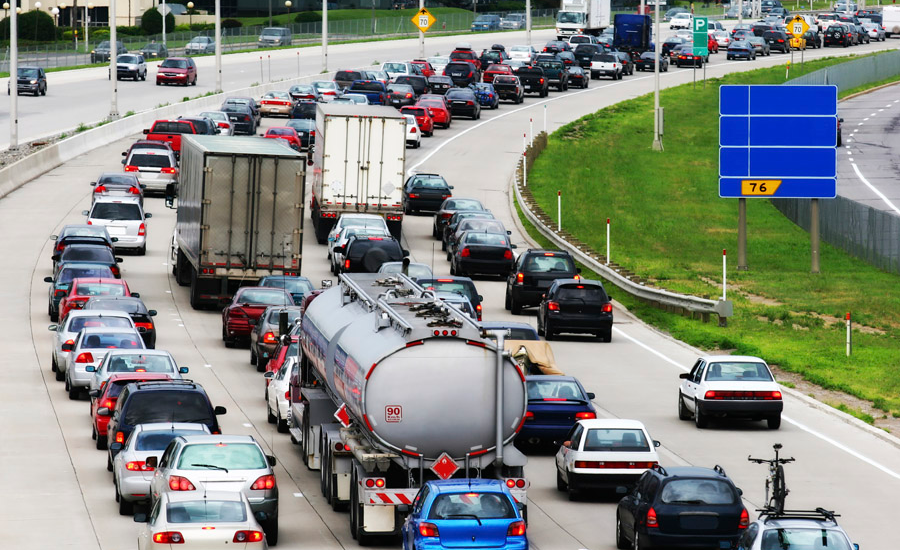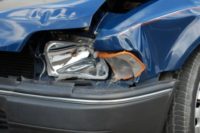The new kid on the block – Tesla – is tops when it comes to equipping its vehicles with automatic emergency braking (AEB), although several other manufacturers aren’t far behind, according to the National Highway Traffic Safety Administration (NHTSA) and the Insurance Institute for Highway Safety (IIHS).
Twenty auto manufacturers have committed to voluntarily equipping virtually all new light-duty cars and trucks with a gross vehicle weight of 8,500 pounds or less with a low-speed AEB system that includes forward collision warning (FCW) and crash imminent braking (CIB) to help prevent and mitigate front-to-rear crashes.
New data released by the NHTSA and IIHS shows uneven progress toward the Sept. 1, 2022 deadline, with Tesla at 100 percent of its vehicles and Mercedes-Benz and Volvo at 93 percent or higher. Toyota is the frontrunner in terms of the total number of vehicles produced with AEB. The automaker equipped 2.2 million (90%) of its 2.5 million vehicles with AEB. Nissan has the second-highest number produced with AEB — 1.1 million (78%) of 1.4 million vehicles. Honda is third-highest with 980,000 (61%) of 1.6 million vehicles produced with AEB.
Brokered in 2015 by NHTSA and IIHS, the commitment is intended to get the safety technology into the vehicle fleet faster than requiring it via a federal rulemaking. Manufacturers submit yearly progress reports to the public docket until they fully conform to the voluntary agreement. Consumer Reports supported the commitment and agreed to assist in monitoring automaker progress.
“Technologies like automatic emergency braking can help make cars safer on the roads, which means Americans are safer when traveling,” said NHTSA Deputy Administrator Heidi R. King. “This update on the status of the voluntary AEB commitment demonstrates how collaborative approaches to advance safety technology can be an effective way to advance our shared safety goals. Working together, we can reduce crashes and prevent injuries.”
IIHS estimates that the commitment will prevent 28,000 crashes and 12,000 injuries by 2025. AEB systems with both FCW and CIB reduce rear-end crashes by half, while FCW alone reduces them by more than a quarter, IIHS research indicates.
“Getting AEB on the road as soon as possible was the main aim of the commitment, and this latest report shows that a significant proportion of vehicles left the factory with AEB on board,” says David Zuby, executive vice president and chief research officer of IIHS.
NHTSA, IIHS, and Consumer Reports credit manufacturers for honoring the commitment.
“When it comes to being on track for the 2022 targets, most manufacturers are ahead of the curve, but far too many still need to kick their efforts into gear,” says David Friedman, vice president, advocacy for Consumer Reports. “It is also encouraging that more than half of models now come with AEB standard, and a third already have more advanced capabilities like pedestrian detection.”
There is room for improvement. Fewer than 10 percent of vehicles produced during the reporting period by Ford, Mitsubishi and Porsche were equipped with AEB. Jaguar Land Rover didn’t report any vehicles with AEB conforming to the commitment.
According to additional data tracked by Consumer Reports and IIHS, 13 of the 20 manufacturers offer AEB as standard equipment on all trim levels on at least half of their 2019 models. Inclusion as standard equipment ensures all consumers interested in a new vehicle will get this important safety technology.
The participating automakers include Audi, BMW, Fiat Chrysler, Ford, General Motors, Honda, Hyundai, Jaguar Land Rover, Kia, Maserati, Mazda, Mercedes-Benz, Mitsubishi Motors, Nissan, Porsche, Subaru, Tesla Motors, Toyota, Volkswagen and Volvo. These companies represent more than 99 percent of the U.S. automobile market.
For details on the voluntary agreement, reports from manufacturers, and model information, visit the public docket at regulations.gov, docket number NHTSA-2015-0101.


